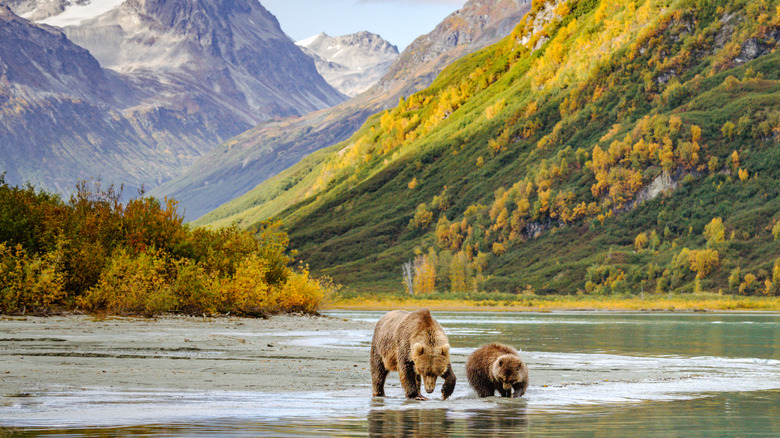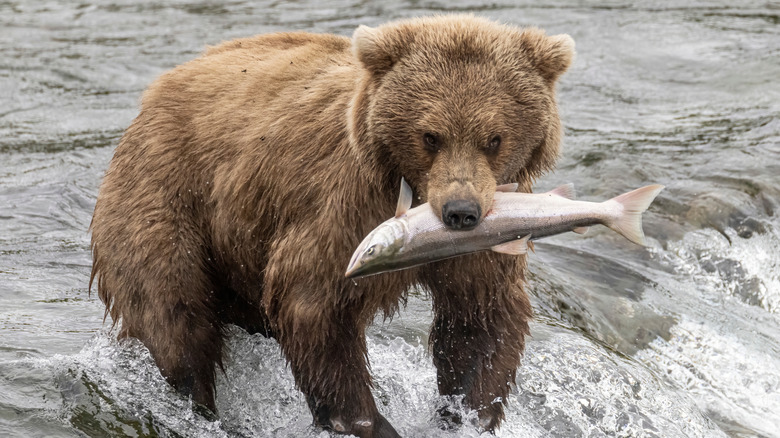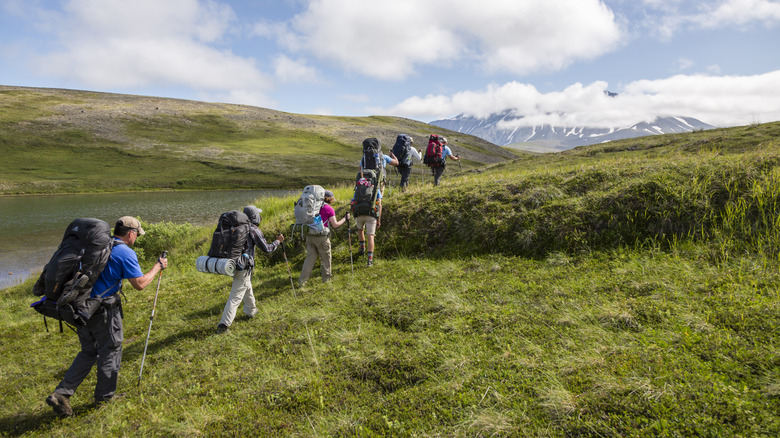A Remote National Park In Alaska Offers Stunning Hiking Trails & Bear Viewing Adventures
You know you're in the middle of nowhere when there are no roads to get there, and arriving by plane or boat is your only option. This is the remote wilderness of Lake Clark National Park and Preserve, where you're just as likely to meet a bear as you are another person. Located 65 air miles from Homer and 120 air miles from Anchorage, this vast and diverse landscape is a mix of coastal meadows, snowcapped mountains, river valleys, ocean coastline, lakes, volcanoes, and glaciers, making it an ideal place in Alaska for first-time visitors. Time your trip between late August and mid-April, and you'll stand a great chance of seeing stunning views of the Northern Lights.
With over 4 million acres of wilderness and only around 20,000 visitors each year, a trip here takes a lot of planning. If you're flying in, several air taxis operate out of Anchorage, Homer, and other towns, and Lake Clark Air operates out of Port Alsworth, the only community in the park. With a population of around 130 people, it's the main starting point for your trip. If you're arriving by boat, access is through the Cook Inlet, and both flights and crossings are dependent on weather conditions.
Despite its remoteness, Lake Clark is home to the Dena'ina people, who have lived here for thousands of years. They continue to rely on the land, and there are several ancestral trails and historic landmarks within the park that hold deep cultural significance, such as The Rock that Stands Alone and The Ancestral Telequana Trail. It's also one of the best places in Alaska to view bears in their natural habitat.
Wildlife in Lake Clark National Park and Preserve
If you're brave enough to venture this far into the wilderness, you're brave enough to go bear watching — one of the main attractions of the park. There are large numbers of brown bears on the tidal flats and salt marshes around Chinitna Bay, or further north at Silver Salmon Creek. The best time to spot them is from June to September, especially during the salmon run, when you stand a good chance of seeing both brown and black bears fishing on the shores of Crescent Lake, which lies in the northeast part of the park, deep in the Chigmit Mountains.
Cute they may be, but cuddly, not so much. Make sure to follow the bear safety rules laid out by the park's rangers and learn what to do in case of a bear encounter. If you prefer to go with a knowledgeable guide, several companies offer bear viewing tours, often with flightseeing, giving you the chance of a bird-eye view of the park. These trips are popular, so it's best to book in advance, especially during peak bear season.
Lake Clark is also home to the largest sockeye salmon fishery in the world. The salmon play an important role in the park's ecosystem and are a key food source for both the human and animal residents. During the salmon run, it's not just the brown bears who try their luck: Bald eagles and wolves come to feast too. This is the place to be for incredible views of wildlife, including moose, caribou, Dall sheep, and lynx.
Hiking trails and wilderness adventures
The sheer diversity of the park makes it ideal for hiking and other outdoor pursuits. The Tanalian trails around Port Alsworth, on the edge of Lake Clark, are a great place to start. There are several trails, from the easy 3-mile Beaver Pond Loop Trail to the more challenging 8-mile Tanalian Mountain Trail, where the views at the top make the climb worthwhile. Further north, both the 1-mile Teetering Rock Trail and the 4.5-mile Eye of the Needle Viewpoint take you past the cabin built by Dick Proenneke, a naturalist who moved here to live a simple life in isolation living off the land, and ended up staying for 30 years. During the summer, park rangers and volunteers open up the house and share stories about the fascinating life of the ultimate wilderness man. The cabin itself lies on the south shore of Upper Twin Lake, just north of Lake Clark.
And if you want to spend some time on the water, anglers are spoiled for choice among the park's lakes and rivers. The three National Wild Rivers, Chilikadrotna, Tlikakila, and Mulchatna, are also popular for rafting and canoeing. Rafts are available to rent at Port Alsworth, but some of the routes can be challenging with varying water levels, so it's worth checking in at the visitor center first. For backpackers who want to channel their inner Dick Proenneke, camping is allowed throughout the park, except in restricted areas. You'll have to bring all your own food (in bear-proof containers, of course), and although you don't need a permit, you'll need some solid navigation skills. For a more "comfortable" stay, there are privately owned businesses, from lodges and hotels to B&Bs, dotted around the park.


